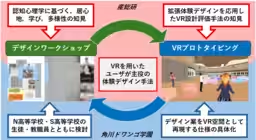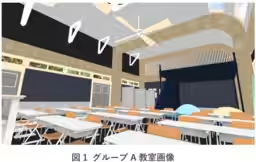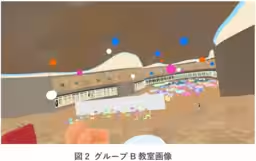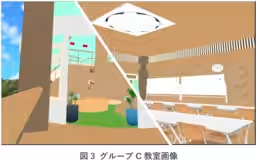

Creating Comfortable Classrooms from the Student Perspective in Virtual Space
Creating Comfortable Classrooms from the Student Perspective in Virtual Space
In a groundbreaking initiative, the National Institute of Advanced Industrial Science and Technology (AIST) and Kadokawa Dwango Academy have collaborated to redefine educational environments by employing Virtual Reality (VR) technology. This project aims to engage students in the design process of what they deem a comfortable classroom. By integrating students' perspectives, AIST has successfully created a virtual representation of classrooms that honor individual diversity and promote inclusive learning experiences.
The Importance of Diversity and Individuality in Education
Creating classrooms that celebrate the uniqueness of each student and accommodate various learning styles is a growing concern in both Japan and globally. The demand for education that adapts to distinct individual needs is increasingly evident. In many settings, however, classroom design has often overlooked students' input, relegating them to mere users of the space without opportunities to express their unique identities.
AIST seeks to address this gap through the utilization of VR technology. The project allows students to visualize their ideas in a space where individuality is paramount, fostering engagement in their educational environments. This approach not only aims to create welcoming and functional learning spaces but also assists in exploring how different learning dynamics can coexist.
Workshop Insights and Collaborative Design
The workshop involved nine students from Kadokawa Dwango Academy's high schools. Through three days of hands-on collaboration, students divided into groups to conceptualize their ideal classroom environments. These sessions emphasized the importance of inclusivity and diversity, leading to the formation of three unique classroom designs that reflect distinct styles and preferences.
Each group's output aimed to encapsulate the essence of student life, harnessing their immediate experiences in actual classroom settings. The classroom prototypes developed from their concepts were not merely theoretical; they provided tangible examples of how diverse student voices could shape educational spaces.
Group A: Mixed Focus Spaces
- - This design features a dual-purpose area that promotes both focused learning and relaxation, recognizing the necessity of balance in educational settings.
- - Individual workspaces allow students to express their personal styles and share their identities through creative displays.
Group B: Open and Varied Learning Environment
- - Emphasizing spaciousness, this classroom incorporates partitioned areas adjusted to cater for different activities, focusing on flexibility.
- - Diverse furniture options aim to adapt to a variety of student preferences, enhancing comfort and usability.
Group C: Functional Integrity
- - The design comprises designated areas specifically for concentration and relaxation, ensuring that students can select spaces that fit their learning activities.
- - This approach prioritizes group collaborations while allowing for individual work settings, ideal for varying educational needs.
A Vision for the Future
As the developed VR classrooms aim to revolutionize traditional settings, they symbolize a shift away from rigid architectural norms in favor of imaginative, student-driven environments where learning can flourish. By leveraging VR’s capabilities, AIST is constructing a bridge between theoretical concepts and real-world applications, paving the way for future educational advancements.
Looking ahead, the project plans to conduct further experiments with students to assess the effectiveness of these new designs. Feedback will drive future adaptations, ensuring that classroom designs cater to existing and emerging diverse needs. Furthermore, the research will explore the implications of gendered educational spaces, scrutinizing how modern classroom layouts can better serve female students and those in diverse educational backgrounds.
With innovation guiding the initiative, the project aspires to inspire schools to create warm, welcoming environments that prioritize individuality and engage every student's interests. As VR classrooms take shape, we may witness education evolve in dynamic, exciting ways that respect and celebrate diverse student identities.
For more information, check the official press release.




Topics Other)










【About Using Articles】
You can freely use the title and article content by linking to the page where the article is posted.
※ Images cannot be used.
【About Links】
Links are free to use.